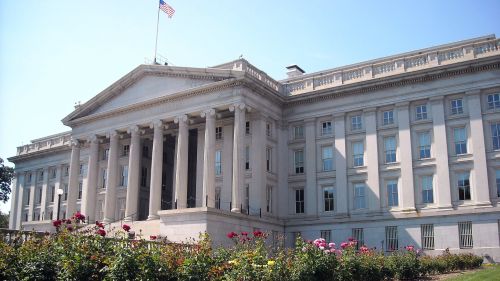Everything You Need to Know About Sanctions

Economic sanctions: what they are, how the US has used them in foreign policy, and considerations for current policymakers.
Sanctions have populated headlines for weeks. US and Iranian negotiators in Vienna have discussed sanctions on Iran, and the United States and Europe are contemplating enhanced sanctions on Russia as it puffs its chest on the border with Ukraine.
But what exactly are sanctions? And how do they work?
The Nuts and Bolts of Sanctions
Even the word is something of a misnomer: sanction usually means “official permission or approval,” but in the international context it refers to a tool for punishing other entities. As originally conceived during the formation of the League of Nations, sanctions include anything one country may do to hurt another country (or person, or company, or political group) short of war. Today, they tend to refer to actions that impose economic harm. Often, US sanctions are used for coercion—trying to get a target country or group to change its behavior.
The sanctions imposed by America often take the form of embargoes, travel restrictions, and financial freezes. An embargo suspends trade with the target country. Trade creates wealth; by cutting off trade to, say, Iran, the US can pressure Iran to stop behavior that Washington disapproves of, like enriching uranium for potential nuclear weapons. (Of course, trade is mutually beneficial, so cutting it off can be mutually damaging. In this case, though, the US is less vulnerable to the cut in trade because it has a much larger economy than Iran.)
Embargos can be partial or total. For example, US sanctions on Belarus currently apply only to the oil and gas sectors, meaning US companies cannot do business with Belarusian energy companies. Meanwhile, the US has had a total embargo policy toward Cuba since the 1960s: with some humanitarian exceptions, no American persons or firms are allowed to trade with any person or business in Cuba.
Travel restrictions are another type of sanction aimed at isolating their targets. They are often accompanied by financial freezes—often on all assets held by the target in US banks —in an attempt to pressure individual government officials, as with United Nations sanctions on members of the Haitian military dictatorship in the early 1990s. Travel and financial restrictions can also be aimed at handicapping groups which the US doesn’t recognize as legitimate. Such restrictions were applied to al-Qaeda after the 9/11 attacks as part of a broader US and global war on the group, aimed less at coercing al-Qaeda than eliminating it entirely.
How Did We Get Here?
US sanctions are in place against more than 20 countries and many more non-state groups. But how do they actually become policy? And how did America come to rely on them so widely?
The president has been able to impose sanctions on other countries in wartime since World War I, when Congress gave President Woodrow Wilson the power to erect trade barriers and seize enemy-owned property in America. During the Great Depression, President Franklin Roosevelt extended this power to peacetime “emergencies.” Congress attempted to curb this power in 1977, but over 50 sanctions-related emergencies have been declared by presidents since then. Such an executive declaration (which does not require consulting with Congress) allows the Office of Foreign Assets Control (OFAC), a body in the Department of the Treasury, to add countries, people, and entities targeted by the president to a master Specially Designated Nationals (SDN) list. Any American that does business with an entity on the SDN list is then liable to heavy fines by OFAC and possible criminal prosecution. US companies then pay lawyers to ensure they don’t work with anyone on this list.
Though the president alone can implement sanctions in this way, Congress can also force the president to impose sanctions (or specify certain entities to be sanctioned) by passing laws. Originally, this was only done against other countries. But, after the 1990s, when the U.S. government began selectively tailoring sanctions to government leaders to reduce their impact on foreign publics, Washington also applied sanctions to groups it did not recognize, such as the Taliban and al-Qaeda. Such “targeted sanctions” were particularly effective at choking off terrorist groups from funds (which is one reason it’s hard for al-Qaeda and the Islamic State to operate today). Sanctions are still in place against the Taliban, which has exacerbated an epic humanitarian crisis in Afghanistan.
A noteworthy evolution in sanctions came around a decade ago, when the US began sanctioning Iran heavily for its nuclear energy program. US sanctions on Iran prevented not only Americans, but also any foreign companies or banks from doing business with Iran. Though foreign entities may be legally allowed to trade with Iran in their own respective countries, secondary sanctions force them to make a choice: do business with Iran or do business with the US, but not both. The thought of losing access to American markets often scares these firms into halting business with the target country. Secondary sanctions are therefore executed largely by the private sector, not by bureaucrats, making them consequential despite the relatively small size of OFAC.
What Lessons Can Be Applied Today?
What can decades of US sanctions tell us about present-day crises, such as the US-Russia standoff in Ukraine? The history of sanctions use should instruct policymakers in three broad ways. First, sanctions have usually contributed to policy success only where they have strong multilateral support. That limits the extent to which US sanctions may affect Russia’s decision-making, as China (the world’s second-biggest economy) would likely trade with Russia to limit the pressure of a US embargo.
Of course, sanctions can still very much affect Russia’s decision-making: the second general principle is that sanctions should aim to change the calculus of some key “pivot” group that can affect policy. Thus, to the extent that power brokers and other key Kremlin supporters can affect Russian military decisions, well-targeted sanctions on them can pressure Moscow to behave differently.
Lastly, any effective sanctions policy must sensibly fit into a larger, realistic government strategy. Sanctions backed by the threat of sending more weapons to Ukraine and a US willingness to negotiate restrictions on NATO posture and expansion may together be enough to convince Russia to not invade Ukraine. But such a diplomatic drive would depend on U.S. bargaining as well as sanctions pressure.
Moving forward, US policymakers should take these lessons to heart and appreciate the limitations of sanctions as a policy tool. Sanctions can be useful when they meet the preconditions listed above and work as part of a broader strategy. But cases where sanctions may be used can vary widely from one another. Sanctioning Russian oil, for instance, would carry far greater repercussions on energy prices than similar sanctions on Iran have. And sanctions have a way of sticking around, as shown by continuing sanctions on the Taliban. Future decision-makers would do well to keep these considerations in mind.

